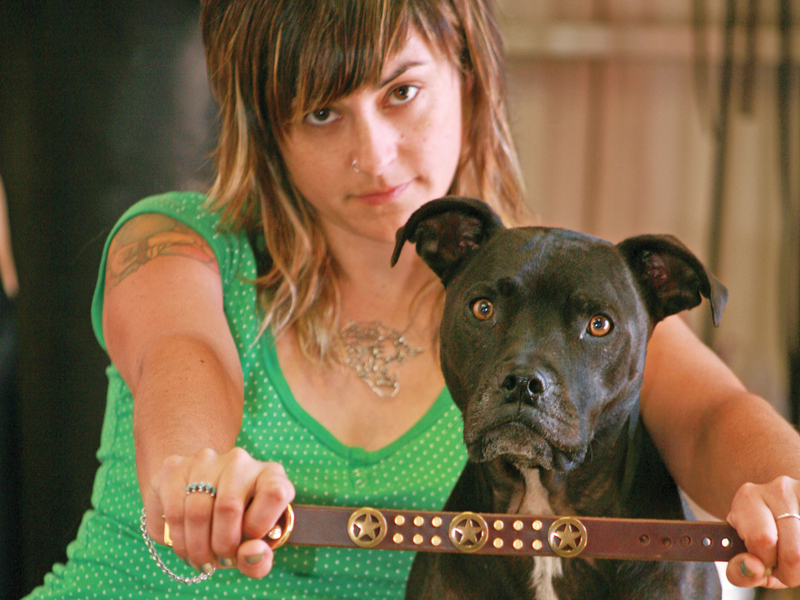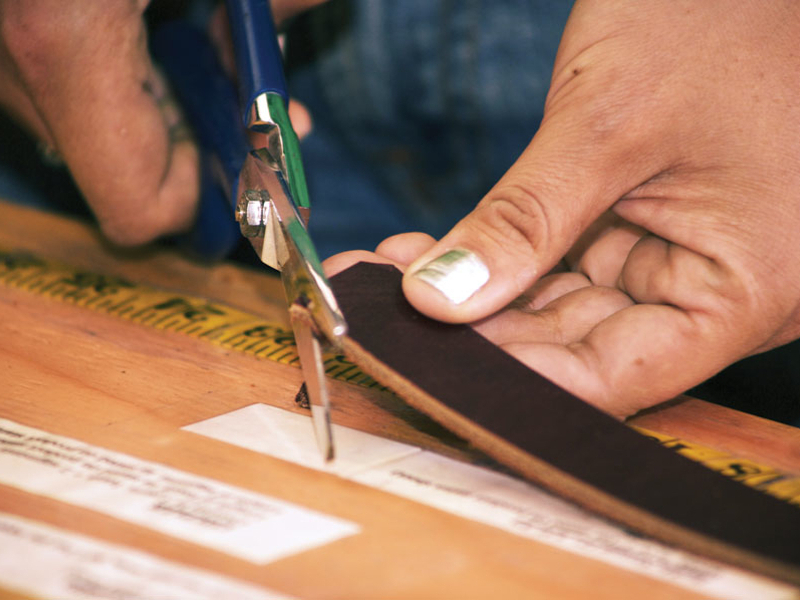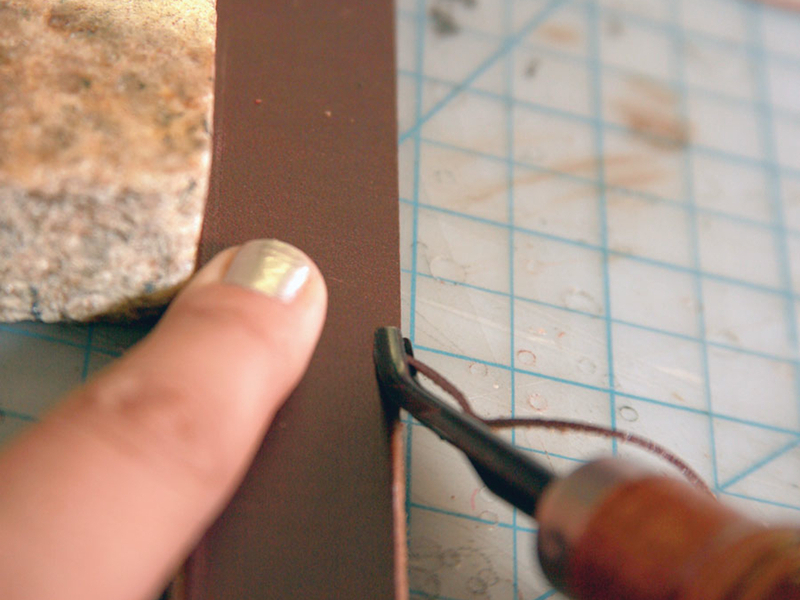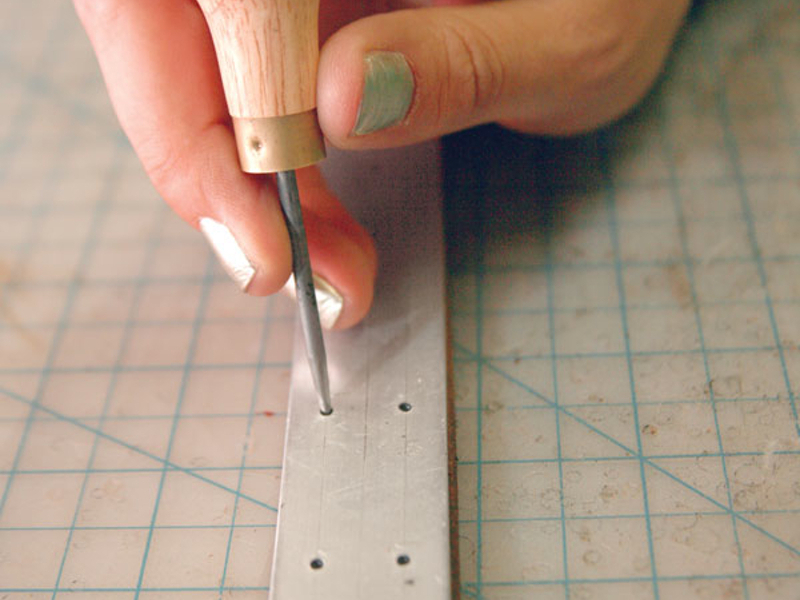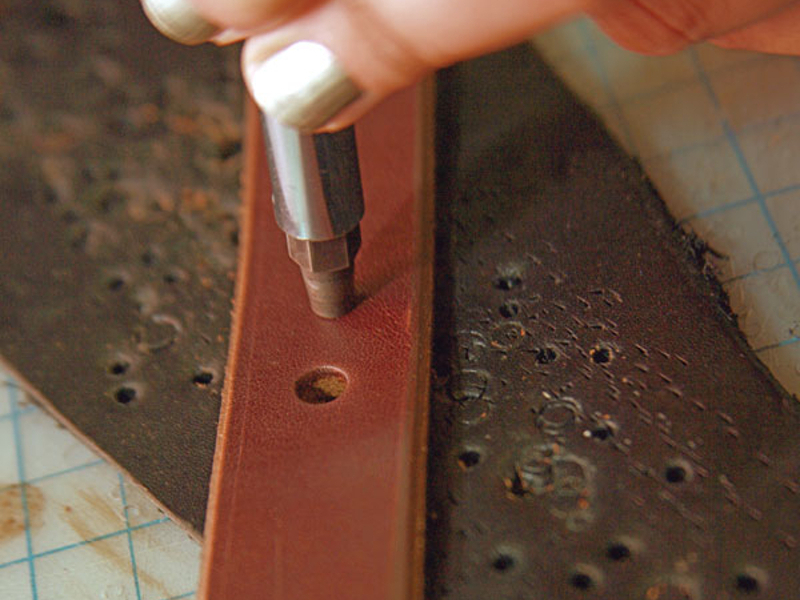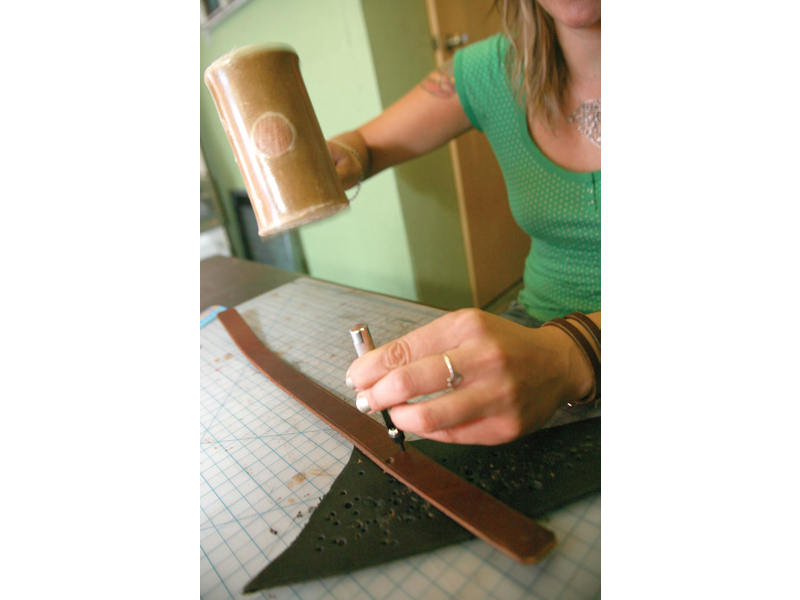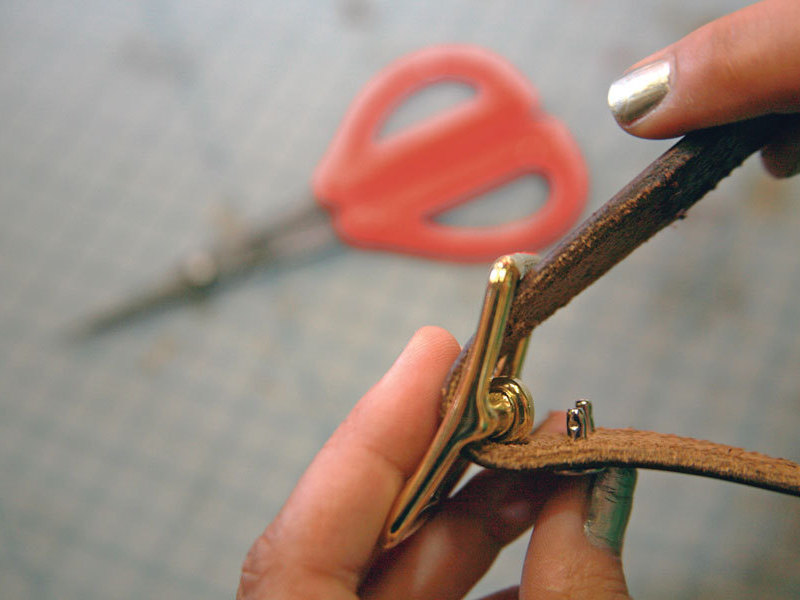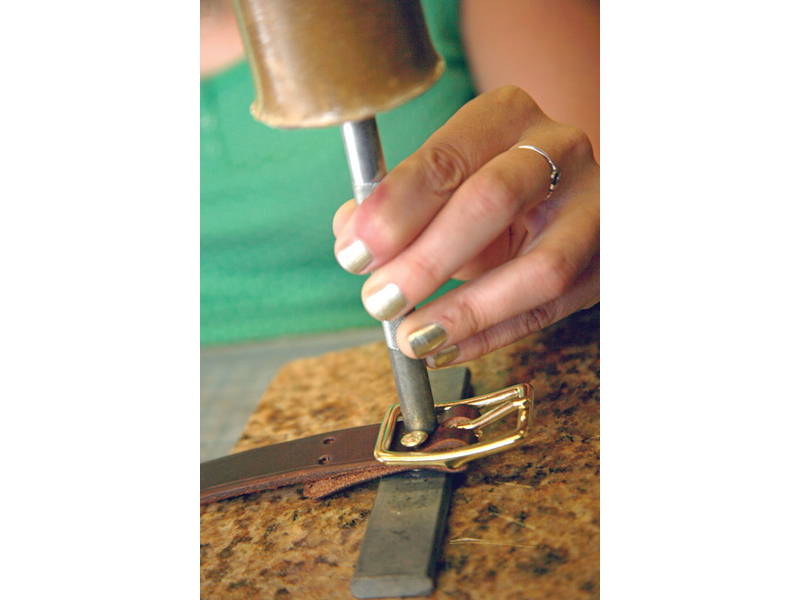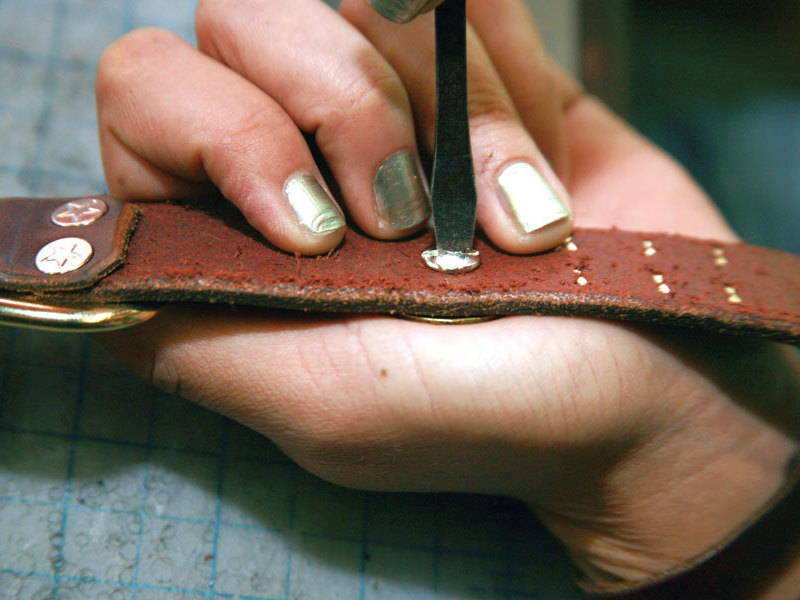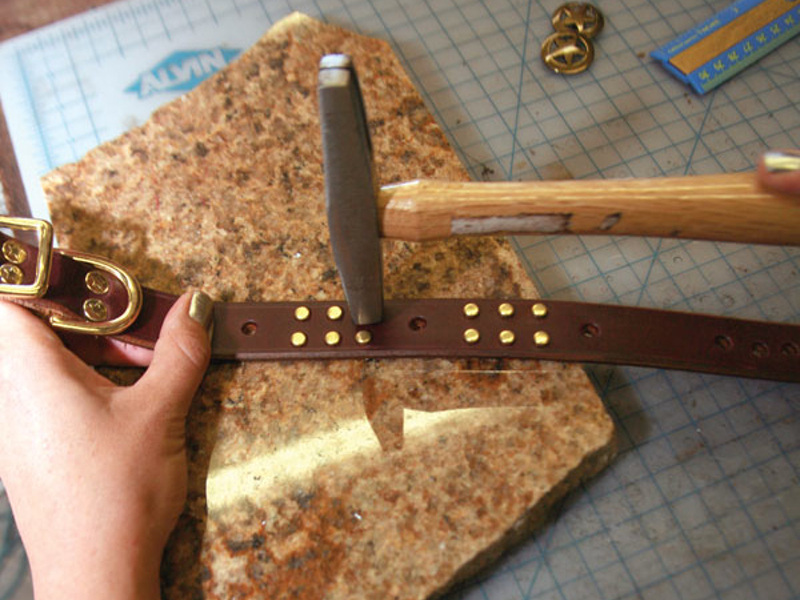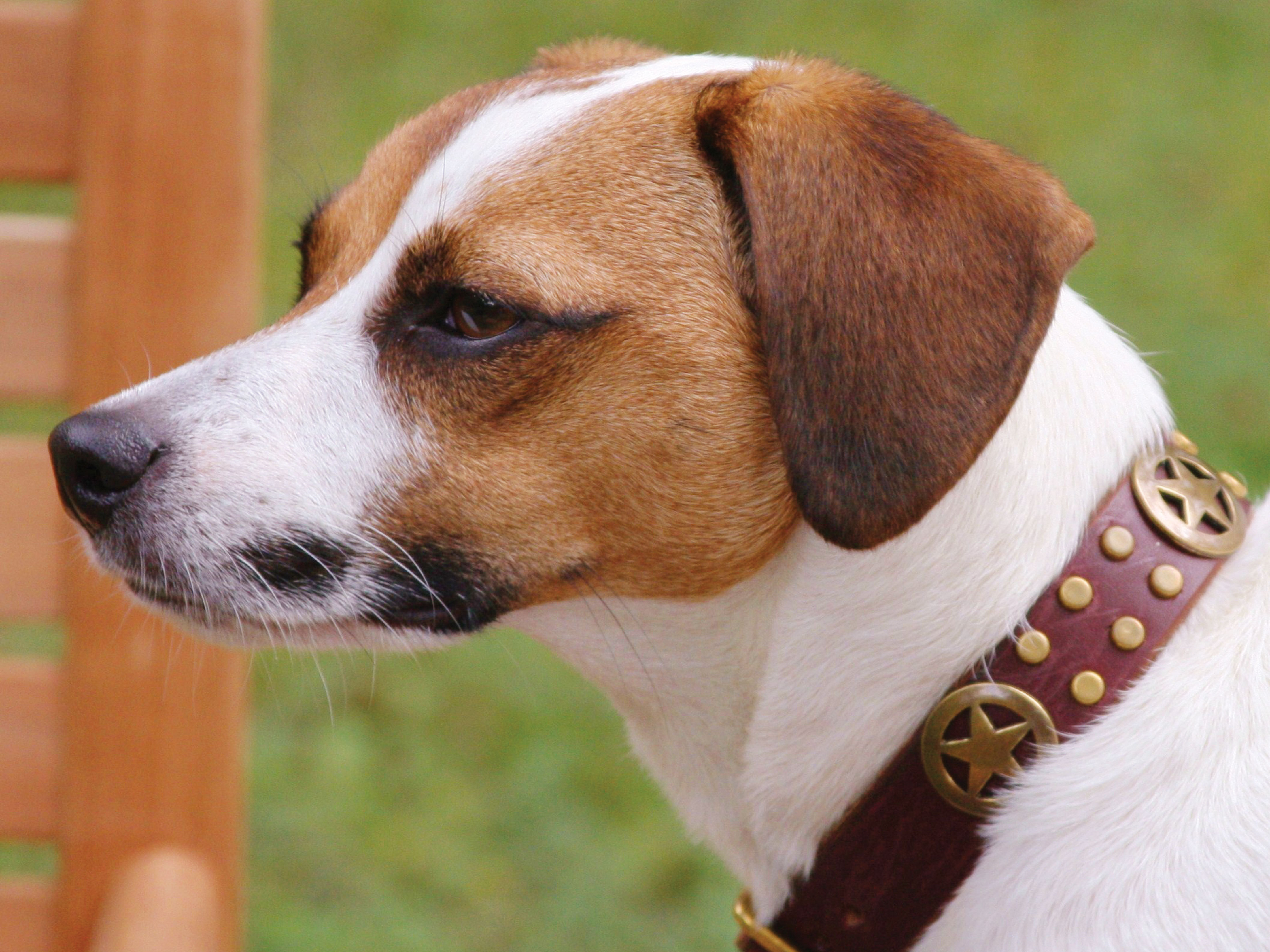Now comes the fun part. Select your decorations and map out their placement on the collar. Mark the leather by using the actual decoration itself (apply pressure to make a mark) or a scratch awl. For studs, it helps to lock them in a pair of needlenose vise-grips so you can easily mark both tails at once.
Decorations attach to the leather in 1 of 3 ways: screw-back, rivet-back, or tails. For screw-back conchos, use a #4 or #5 hole punch, punch the hole, and then screw into place. For added security, apply a drop of threadlocker on the backing.
For rivet-back decorations, use a #0 punch and the appropriate setting tools. Without machinery, setting rivet decorations securely enough for daily wear while simultaneously not damaging the decoration can be tricky, so we recommend staying away from rivet-backs if you can help it.
For studs, cut parallel holes with an X-Acto blade, push the stud through the holes, turn the tails in with a screwdriver or pliers, and then gently tap with a tack hammer. Studs are an easy way to add a lot of flash to a collar, like spelling out a dog’s name, that’s sturdy enough to last.
There are also a variety of leather-stamping tools on the market as well as paints and finishes, so you can stamp shapes or re-create your favorite ’70s belt.
Leather working can be challenging, but the reward of creating a piece of art that can potentially outlive you or your dog is worth it. Most leather workers are more than happy to share techniques and solutions if you find yourself stuck, so don’t be afraid to call on us!
NOTE: Most leather decorations are calibrated for the thickness of leather, so if you want a vegan option, the best thing to do is start with a pre-made vegan belt that measures at least 1⁄4″ thick. Treat it like a strip of leather, as all the tools and instructions stay the same.


